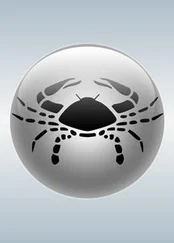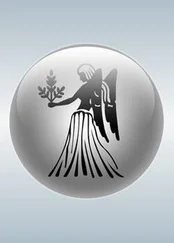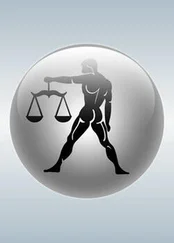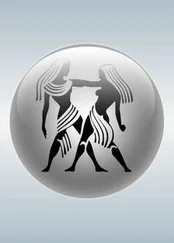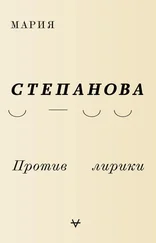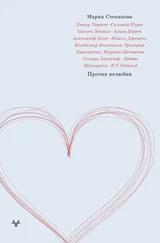Straight after the war, when Charlotte’s father and stepmother were finally able to come to Villefranche-sur-Mer to search for her — for anything, traces, tokens, tales — they were handed a file that Charlotte had left with an acquaintance with the words: “This is all my life.” The logic of the “typical” that I spoke of earlier pushes us to search out analogies, and in this case an analogy was waiting in the wings: in exactly the same way Miep Gies gave Otto Frank a bundle of papers, including Anne Frank’s diary, when he returned from concentration camp. There is, astonishingly, a very real connection between these stories in that Albert Salomon and his wife hid in Amsterdam, not far from the Franks, and Otto Frank chose to show them Anne’s diary before anyone else. A little later they decided together with Otto what to do with Charlotte’s drawings. I have an idea of them in the fifties and sixties, parents who had lost their children, sitting together and arranging their children’s posthumous fate. The first publication of Salomon’s work appeared in 1963 and the quality of its reproductions remains thrilling. Eighty of the thousand-plus gouaches are included and the book is called Charlotte: A Diary in Pictures . “In pictures” — as if we are talking about a little girl, Anne Frank’s age or even younger. The diary is a traditionally female genre, a sort of mirror-mirror-on-the-wall: the spontaneous and unadorned voice of the feelings. The joy of the genre is in its very immediacy and simplicity. Anne Frank’s diary was carefully edited to make it a text of consolation rather than horror, and was already making headlines all around the world, it had become the most influential text about the Holocaust, a way of thinking about it without thinking about railway lines, pits, and corpses, pushing all these horrors back to the epilogue: and then they all died . Whether consciously or not, Anne Frank’s diary became a model for the first publishers of Salomon’s work, who insisted on the convergence of Charlotte the author and Charlotte Kann, the fictional heroine of the work, young victim, so very promising, so little fulfilled.
The tradition set by the family both elides author and heroine, and yet suggests at the same time that actually “things happened quite differently.” Whatever the reality was, we only know how Charlotte had wanted to tell the story at any cost. It’s hard to distort the carefully constructed Life? Or Theater? , the editing principle already lay at the heart of its structure and the 500 rejected drawings testify to this — but the first publishers’ impulse to “tidy the story up” meant they didn’t stop at cutting the images, presenting fragments from the carefully composed whole image without indicating they were fragments, and crossing out or rewriting phrases. They had a harder job than the editors of the Anne Frank diary, where only very particular elements of the text were censored: anti-German outbursts, hurtful things about Anne’s mother, chat about contraceptives, shocking for the time — and, more interestingly, any reference to the everyday Jewish experience, like Yom Kippur, which would be inaccessible to a wider readership.
The editorial changes to Salomon’s singspiel ran counter to everything, foremost actual authorial intent: Salomon had shaped the work like the film of a family’s history, run from beginning to end as if everyone was dead and gone, including her, and nothing could touch her anymore. Everything that happened from the 1880s onward was subject to revision, to satire and distancing: deaths, marriages, meetings and new marriages, career hopes, the love of art. That sort of chronicle, describing lives over several generations as the movement toward an inevitable endpoint, won Thomas Mann the Nobel Prize. But then his work was far more conservative.
*
You could, I suppose, tell it like this: an old, honorable, and assimilated Jewish family, oil paintings on the wall, a summer house in Italy, candles on the Christmas tree, breaking into “Deutschland über Alles” at moments of national fervor. And far too many suicides. We’ll skip the brothers and other relatives and begin with one of the daughters, the more melancholy daughter, who leaves the house one November evening and drowns herself in a lake. A few years later the second daughter, the happier one, gets married. Eight years later, after promising her own daughter she will send her a letter from heaven, she jumps to her death from a window. The daughter is never told how her mother died: she thinks she died of flu.
New governesses, trips to Italy, the little girl grows up. She is called Charlotte after her dead aunt and her living grandmother — as if the line of Charlottes can’t be broken. One day her workaholic father (“And I will be Professor. Don’t disturb, please don’t disturb me.”) meets that peak of refinement, a blonde woman who sings Bach. In Life? Or Theater? she has the clown-like name Paulinka Bimbam. I should add here that for one reason or another all the characters with some connection with the stage have operetta-style names with jester’s bells attached: Bimbam, Klingklang, Singsang. These masked players have double names to match their own comic duality. Bimbam’s real name was Paula Lindberg, but even that was not her real name: she was the daughter of a rabbi, and her real name was Levi. She was Jewish like everyone else in Charlotte’s life. Ten years later Charlotte wrote about her family that one should remember they lived in a society consisting entirely of Jews.
The marriage of science and art (medicine and music, of Albert Salomon and Paula Lindberg) pleased fourteen-year-old Charlotte more than anyone. Her relationship with her stepmother can only be described as passionate, and as time passed this passion became weighted with its attendant sentiments: jealousy, misery, exigency. Lindberg wanted to be a mother to the orphan, but instead she became embroiled in a white-hot crush friendship, a pleasure and a torment to them both. Our only clear source for this is Life? Or Theater? where much of the information may be deliberately or involuntarily distorted — but what can’t be mistaken is the level of attention directed at the heroine of the novel (or the operetta?), Paula. There are hundreds of portraits of Paula and they reproduce with terrifying precision the expressions and movements of Paula’s face (in a video interview with Paula, made decades later, it’s these expressions you recognize first — the face is old, but the mannerisms are unchanged). There’s a page filled entirely with the bodies and the faces of Paulinka: sullen, passionate, animated, downcast, detached. In the center, her official portrait on a playbill with a list of the towns where she had sung to great acclaim. Only the character of the singspiel, Amadeus Daberlohn (Alfred Wolfson) takes up more space in the narrative.
The many pages of “drawn” writing stand outside the main body of the text. This writing was intended as an epilogue, but constantly strives to become a letter to an addressee, Wolfson, whose fate Charlotte did not know. Parts of this “letter” are online at the Jewish Cultural Quarter Museum in Amsterdam. It has been excerpted and quoted, but never published in its entirety. At one stage in the composition of Life? Or Theater? the artist thought of the whole work as a speech in a dialogue with Wolfson, a way of proving to him her own ability to regenerate. The work has an addressee who is the person Charlotte Salomon considered or wanted to consider her beloved, and in dozens of scenes she rehearses the notion of inseparability, from embrace to complete union.
This can perhaps be explained by the fact that the gouaches depicting Paulinka are lit with erotic energy, but they never cross the line into the territory of love: the narrator deliberately holds the narrative on the brink, hinting and never clarifying (“our lovers have made it up again”). This page is a rapid burst of images of the two women moving toward each other, the little girl in her blue bedroom, stepmother by her bed, their embrace caught in nine frames, Paulinka bending down, her stepdaughter moving toward her, suddenly tiny, a babe in her mother’s arms. The embrace is full, Paulinka’s face is pressed against Charlotte’s breast, the white sheets blossom pinkly. In the last image at the bottom of the page the childish blue pajamas are gone, and instead we see the naked shoulders and arms of both women. Charlotte’s eyes are screwed up and the sheet is now a crimson wave. The explicit nature of the drawings has no textual equivalent — if a thing is left unnamed, does it exist?
Читать дальше



